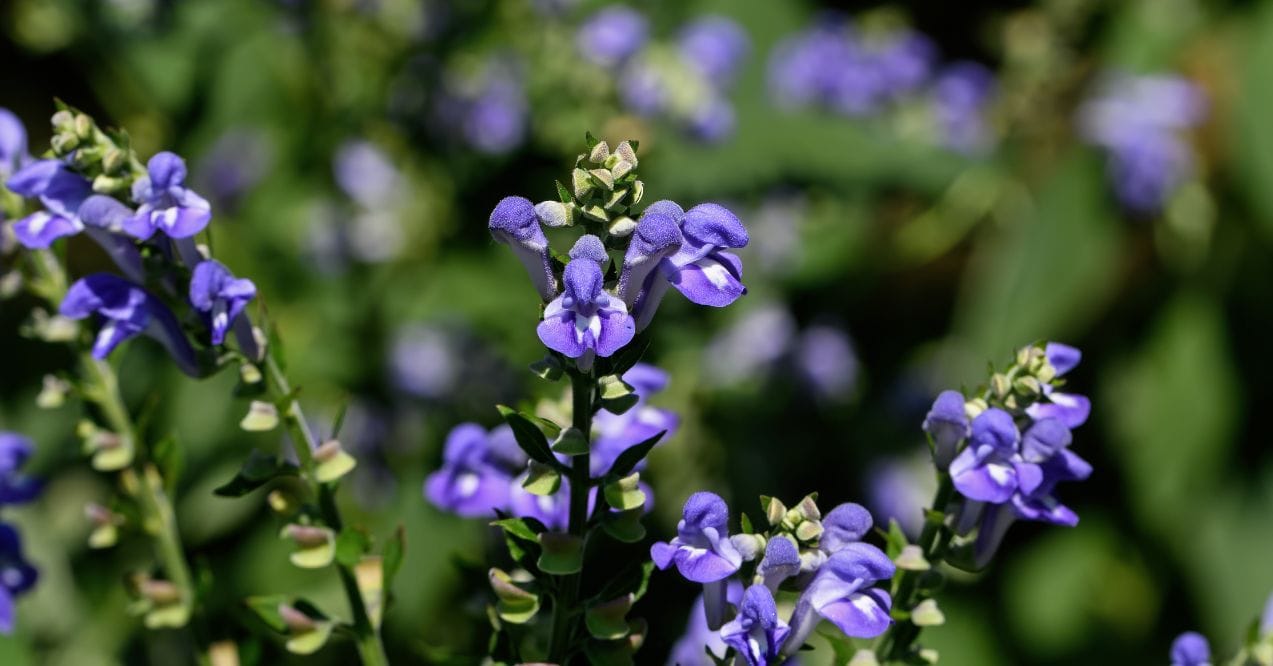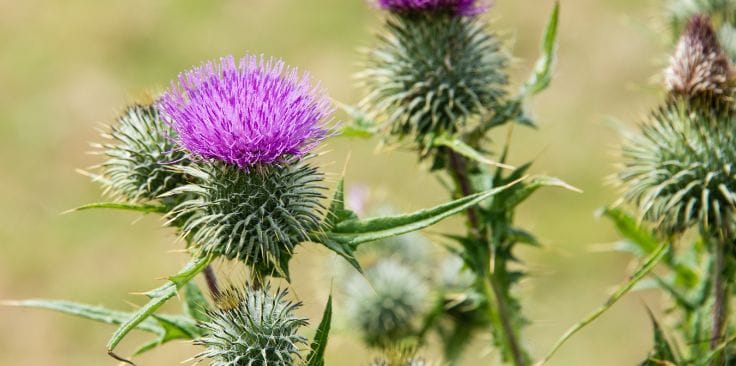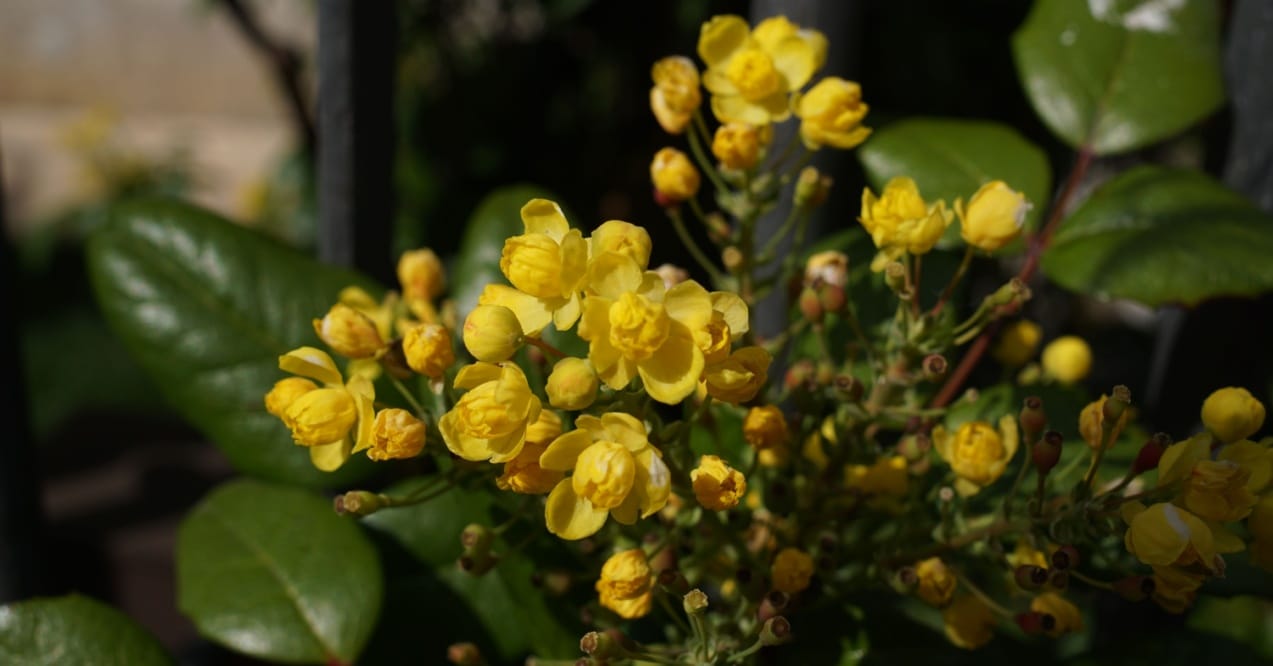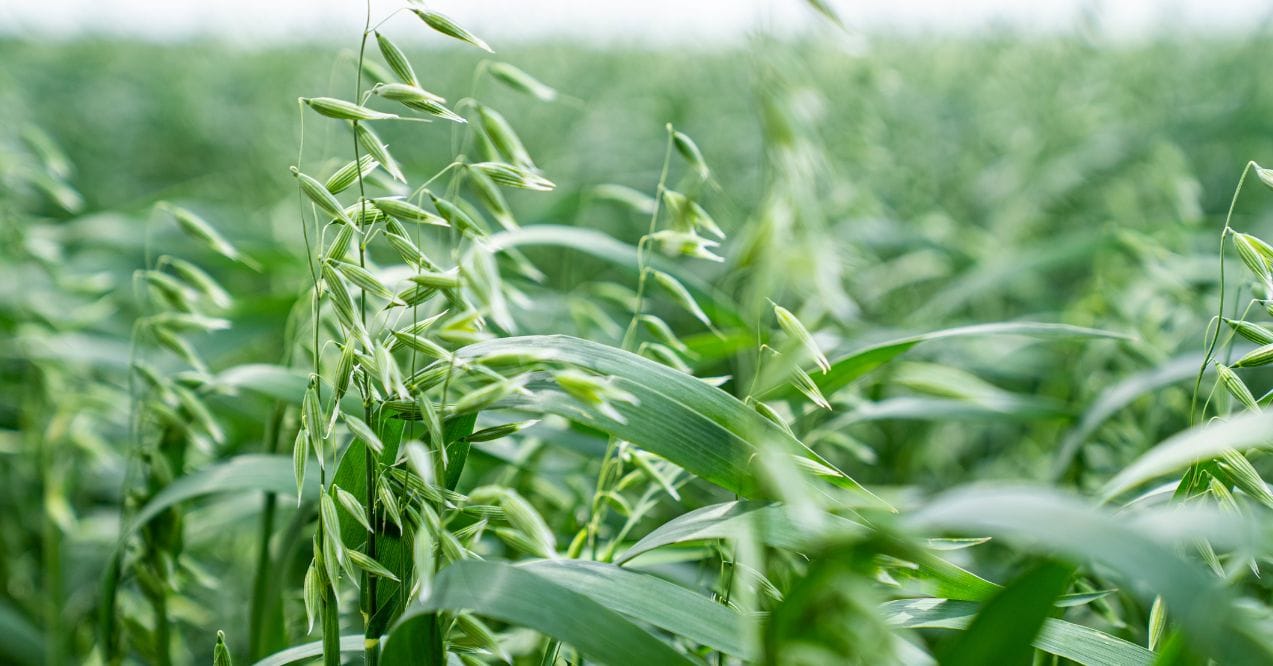Chinese Skullcap Benefits – Use, Downsides and More
Medically reviewed by our experts


Chinese skullcap (Scutellaria baicalensis) has been used in traditional Chinese medicine for centuries. Known for its potential anti-inflammatory properties, this herb is gaining attention for its active compounds baicalin and baicalein. This article explores the benefits, uses, and potential downsides of Chinese skullcap.
Key Article Findings
- Chinese skullcap contains powerful compounds baicalin and baicalein that may reduce inflammation
- Side effects can include nausea, dizziness, and rare cases of liver injury
- Consultation with healthcare providers is essential before starting supplementation
What is Chinese Skullcap?
Chinese skullcap, scientifically known as Scutellaria baicalensis, belongs to the mint family and has served as a cornerstone in traditional Chinese medicine for over 2,000 years. This flowering plant grows primarily in China, Russia, and other parts of Asia. Its dried root, known as huang qin in Chinese medicine, contains numerous bioactive compounds.
The herb gained its common name from the helmet-shaped flowers that bloom on the plant. Traditional practitioners have long valued Chinese skullcap for its potential to address various health concerns. Modern research has identified over 40 different flavonoids in the root, with baicalin and baicalein being the most studied compounds.
Unlike its American cousin (Scutellaria lateriflora), Chinese skullcap specifically refers to the Scutellaria baicalensis species. The roots are typically harvested after three to four years of growth for optimal compound concentration. Today, Chinese skullcap is available in various forms including dried root preparations, standardized extracts, and dietary supplements.
Traditional Uses of Chinese Skullcap
Historical texts document Chinese skullcap’s use for treating fever, respiratory infections, and digestive issues. Ancient practitioners prescribed huang qin for conditions involving excess heat in the body. The herb frequently appeared in classical formulas alongside other medicinal plants.
Traditional Chinese medicine theory suggests that Chinese skullcap has cooling properties. Practitioners used it to clear heat and dry dampness from the body. Common applications included treating dysentery, jaundice, and inflammatory conditions of the respiratory and digestive systems.
The Health Benefits of Chinese Skullcap
Scientific research continues to explore the potential chinese skullcap benefits that traditional medicine has recognized for centuries. Studies have identified multiple mechanisms through which the herb’s compounds may support health. The primary active compounds, baicalin and baicalein, demonstrate various biological activities in laboratory and animal studies.
Research suggests these compounds may work by modulating inflammatory pathways and protecting cells from oxidative damage. Some studies indicate potential benefits for cardiovascular health through improved blood flow and reduced inflammation. The herb’s antioxidant properties may also support overall cellular health and function.
While human clinical trials remain limited, preliminary research shows promise for several applications. The herb’s potential neuroprotective effects are also under investigation for conditions affecting brain health.
Anti-inflammatory Effects
Chinese skullcap’s anti-inflammatory properties may help manage various inflammatory conditions. Research indicates that baicalin and baicalein can inhibit pro-inflammatory molecules in the body. These compounds may block specific enzymes and signaling pathways involved in inflammation.
The herb’s compounds may reduce swelling, pain, and tissue damage associated with chronic inflammation. Some research also indicates possible benefits for skin inflammation and respiratory inflammation.
The Active Compounds in Chinese Skullcap
The therapeutic potential of Chinese skullcap comes from its rich array of bioactive compounds. Scientists have identified over 40 different flavonoids in the root extract. These compounds work synergistically to produce the herb’s various health effects.
The concentration of active compounds varies based on growing conditions and harvesting methods. Standardized extracts typically contain 10-20% baicalin content for consistent potency. Quality supplements often list the percentage of key compounds on their labels.
Research continues to uncover how these compounds interact with human biology. Their ability to cross the blood-brain barrier makes them particularly interesting for neurological applications. The compounds also demonstrate good bioavailability when taken orally in appropriate forms.
Baicalin and Baicalein
Baicalin and its aglycone form baicalein represent the primary active constituents in Chinese skullcap. These flavonoid compounds possess strong antioxidant and anti-inflammatory properties. Baicalin converts to baicalein in the intestines for better absorption.
Both compounds can modulate multiple cellular pathways involved in inflammation and cell survival. They may inhibit specific enzymes that produce inflammatory molecules. Research also shows they can activate protective cellular responses against oxidative stress.
Other Active Compounds
Beyond baicalin and baicalein, Chinese skullcap contains wogonin, oroxylin A, and other beneficial flavonoids. These compounds contribute additional antioxidant and anti-inflammatory effects. Some may have unique properties that complement the primary compounds.
The root also contains small amounts of amino acids, minerals, and other plant constituents. These supporting compounds may enhance the absorption and effectiveness of the main flavonoids. The synergistic effects of multiple compounds often exceed individual compound benefits.
Potential Side Effects and Risks
While Chinese skullcap has a long history of traditional use, potential side effects exist. Common mild reactions may include stomach upset, drowsiness, or dizziness. These effects typically occur with higher doses or in sensitive individuals.
Rare but serious side effects have been reported, including liver problems in isolated cases. Some reported liver issues involved products containing multiple herbs or contaminated supplements. For those interested in supporting their nervous system supplements, quality and purity remain essential considerations.
Drug interactions may occur with medications metabolized by certain liver enzymes. The herb may also interact with sedatives, blood thinners, or diabetes medications. Starting with low doses helps identify any individual sensitivities or reactions.
Who Should Avoid Chinese Skullcap?
Pregnant and breastfeeding women should avoid Chinese skullcap due to insufficient safety data. People with existing liver conditions need medical supervision before use. Those scheduled for surgery should discontinue use at least two weeks prior.
Individuals taking prescription medications should consult healthcare providers before adding Chinese skullcap. Children under 18 should not use the herb without medical guidance. Anyone with hormone-sensitive conditions should exercise caution due to potential hormonal effects.
How to Use Chinese Skullcap Safely
Safe use of Chinese skullcap starts with choosing high-quality products from reputable manufacturers. Look for standardized extracts that specify baicalin content for consistent dosing. Third-party testing certifications provide additional quality assurance.
Begin with the lowest recommended dose to assess tolerance. Many practitioners suggest taking Chinese skullcap with food to minimize digestive upset. Those seeking comprehensive support often combine it with other herbs, such as in formulations like N-Balance 8, which includes complementary ingredients.
Monitor your response carefully during the first few weeks of use. Keep a journal noting any positive effects or adverse reactions. Discontinue use and seek medical advice if concerning symptoms develop.
Dosage and Administration
Typical doses of Chinese skullcap vary based on the preparation form:
- Dried root: 3-9 grams daily as tea or decoction
- Standardized extract: 250-500 mg two to three times daily
- Tincture: 2-4 mL three times daily
Start with lower doses and gradually increase as tolerated. Take doses with meals to improve absorption and reduce stomach upset. Most practitioners recommend cycling use with breaks every few months.
Conclusion
Chinese skullcap offers numerous potential health benefits, particularly for reducing inflammation and protecting against oxidative stress. While its active compounds show promise in research settings, more human studies are needed. Always consult healthcare professionals before starting any herbal regimen to ensure safety and appropriateness for your individual needs.
Long-term safety data remains limited for Chinese skullcap. Most practitioners recommend cycling use with periodic breaks. Regular monitoring and healthcare provider consultation help ensure safe extended use for appropriate individuals.
Chinese skullcap contains unique flavonoids that work through specific pathways. Its effects may complement other anti-inflammatory herbs. Individual responses vary, making personal experience the best guide for effectiveness.
While traditionally used for calming effects, Chinese skullcap differs from American skullcap for anxiety. Some people report mild relaxation benefits. Those seeking anxiety support should discuss appropriate options with healthcare providers.
Chinese skullcap may interact with blood thinners, sedatives, and diabetes medications. It can affect liver enzyme activity, potentially altering drug metabolism. Always disclose supplement use to healthcare providers and pharmacists.
Standardized extracts with verified baicalin content offer consistent dosing for liver support. Quality matters significantly for safety and effectiveness. Consult healthcare providers familiar with herbal medicine for personalized recommendations.
Rd, J. K. M. (2024). Skullcap: Benefits, side effects, and dosage. Healthline.
Chanchal, D. K., Et Al. (2023). An updated review of Chinese skullcap (Scutellaria baicalensis): Emphasis on phytochemical constituents and pharmacological attributes. Pharmacological Research – Modern Chinese Medicine, 9, 100326.
Ahmadi, A., Et Al. (2022). Protective and therapeutic effects of Scutellaria baicalensis and its main active ingredients baicalin and baicalein against natural toxicities and physical hazards: a review of mechanisms. DARU Journal of Pharmaceutical Sciences, 30(2), 351–366.
Sowndhararajan, K.,Et Al. (2018). Neuroprotective and cognitive enhancement potentials of Baicalin: a review. Brain Sciences, 8(6), 104.
Liu, Y., Et Al. (2024). Exploring Bioactive Constituents and Pharmacological Effects of Scutellaria baicalensis Georgi: A Review. Natural Product Communications, 19(8).
Dhanasekaran, R., Et Al. (2013). Chinese skullcap in move free arthritis supplement causes drug induced liver injury and pulmonary infiltrates. Case Reports in Hepatology, 2013, 1–4.
Sabry, K., Et Al. (2024). Potential therapeutic effects of baicalin and baicalein. PubMed, 14(1), 23–49.
Popular Articles
Advertisement. This site offers health, wellness, fitness and nutritional information and is designed for educational purposes only. You should not rely on this information as a substitute for, nor does it replace, professional medical advice, diagnosis, or treatment. If you have any concerns or questions about your health, you should always consult with a physician or other health-care professional. Do not disregard, avoid or delay obtaining medical or health related advice from your health-care professional because of something you may have read on this site. The use of any information provided on this site is solely at your own risk.







